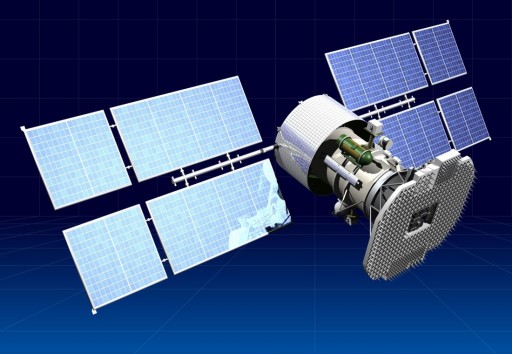Garpun Satellite

Garpun (Harpoon) is a secretive Russian Satellite Program believed to be a series of Geostationary Satellites operated by the Russian Ministry of Defence. The satellites relay data from spacecraft in lower orbits to Russian ground stations using secure communication links to enable the downlink of real-time data over a large portion of the satellites’ orbit including optical and electronic reconnaissance data.
The Garpun satellites are likely the replacement of the Potok/Geizer satellites that were inaugurated in 1982 to deliver communications relay between the Terilen (Yantar-4KS1) & Neman (Yantar-4KS1M) satellites and Russian ground stations. It is possible that the Potok satellites also handled communications with other military satellites capable of downlinking digital data. The Potok satellites were built by NPO PM (now ISS Reshetnev) and featured a phased array antenna operating in C-Band. The final Potok satellite was launched in 2000 and stopped operating in 2009, creating a gap in an operational data relay capability. At that point, the first launch of Garpun had already slipped from an initial target of 2009.
More delays led to the launch slipping further, finally taking place on September 20, 2011. Proton-M delivered the satellite to the intended Geostationary Drift Orbit from where the spacecraft climbed into its target Geostationary Orbit. The launch was shaded in much secrecy – no information on the identity of the satellite was officially released and no details on the spacecraft were revealed at any point before and after the launch. The first Garpun satellite operates under the Kosmos-2473 designation.
It is likely that the Garpun satellites are manufactured by ISS Reshetnev given the company’s involvement in Garpun’s predecessor. In that case, the satellites are most likely based on the Ekspress-1000 or 2000 satellite platform – topping out at just over three metric tons based on Proton’s payload capability for direct Geostationary injections. The Ekspress platform can be outfitted with various types of satellite payloads including several antenna reflectors capable of tracking low-orbiting satellites and relaying their signals to ground stations. Whether the satellites continue operating in C-Band or whether S-/Ku-Band capabilities have been added is unknown.
In theory, three operational Garpun satellites would be sufficient to achieve a global coverage, capable of continuous relay of real time data in the form of optical reconnaissance imagery or electronic intelligence data from any portion of the satellite’s orbit.
